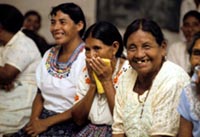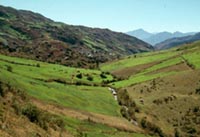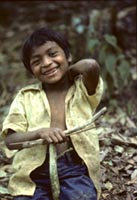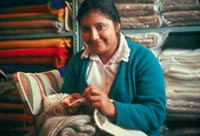The Lay Missioner presence in North America includes mission work in both Central America and the United States. In the US, 120 missioners have served in leadership, administrative, formation, and/or mission roles. The Central America mission field opened with Guatemala and Nicaragua in 1975, and, over the years, expanded to include Panama (1977), Mexico (1984), Honduras (1985) and El Salvador (1993). To date more than 100 lay missioners have worked in these countries in the areas of health and health care, justice and peace, pastoral ministry, education and sustainable development. They have touched the lives of the people they served, effected change in their mission field and in return have had their hearts and live profoundly enriched. The following are a few of their personal reflections on their work and mission experiences:
“I went through the orientation program, attended language school and finally found myself in mission. Believe me, all the preparation in the world didn’t prepare me for the reality of mission life. It is extremely challenging, sacrificial, joyful, lonely, but it is something I would do all over again. It has helped me to see beyond my own little world and perhaps I’ll never be the same again because of it. I have a health program where another lay missioner and I go out in our pickup truck to the aldeas (small villages) which are closest to us. We stay two days in each aldea, sleep in the church, cook our own food, give classes in health and a clinic in each place. The people are unlike any I’ve ever worked with. Never have I seen such responsiveness and such ability to go with whatever life brings. They laugh easily and heartily. They know to be patient and I’m learning from them.”
Missioner in Guatemala, 1979
“Almost five years ago another Lay Missioner and I began our work among the people of the jungle area of Guatemala – the Peten. We dreamed of teaching leaders among the people in this underdeveloped and almost totally neglected area to care for the diseases of their own people and to teach them prevention. We worked for two exhausting years traveling to sixteen different villages with a mobile clinic and hygiene classes. Finally, we decided that we had given enough of an understanding of health matters to begin our health promoters’ program. After just beginning our series of sixteen classes, my partner’s three year contract was up and she was replaced by a Canadian doctor. Together, she and I formed our health promoters over a period of one and a half years more, helping them with practice clinics and visiting their communities. After much hard work on their parts and after meeting many challenges, our twenty-eight students graduated and received their licenses to diagnose and treat the common diseases of the people, teach them health classes and install latrines. To our great joy, my original Lay Missioner partner joined us on the happy day.”
Missioner in Guatemala, 1982
“Our Maryknoll lay mission group spent four months in orientation before we set out for our mission assignments. The classes varied from the practical (don’t drink the water) to the spiritual (don’t forget to pray). We learned that part of the miracle of mission is that missioners often help the poor in surprising and unexpected ways. this principle came to life one day in the parish clinic I ran in Guatemala when Juan complained of hiccups for the previous 24 hours. He was unable to eat or sleep and could only take small sips of water. I gave him medicine and told him to come back the next day if the problem persisted. First thing next morning there was Juan looking exhausted and hungry. The medicine hadn’t helped. Having nothing else to offer, I volunteered to drive him the six kilometers to the nearest hospital. Juan gladly climbed into the Jeep and we rode in silence punctuated by constant hiccuping. When the doctor started to examine Juan, we all realized that the hiccups had abruptly stopped. Juan had an explanation for the sudden change: ‘I had never ridden in a car driven by a woman before and it scarred the hiccups out of me.'”
Missioner in Guatemala, 2010
“As a Maryknoll lay missioner in El Salvador, I assisted a group of women working together to earn a little income to help support their families. Some of the women had never attended school. Even the most educated of them had only a fourth-grade education. In their homes, they made meshed beaded doilies to protect food and beverages from pesky insects or to use as tablemats. We worked to streamline the product line and explore marketing options. Most of the proceeds went directly to the women, with a portion going back to the group’s coffers. No one got rich, but every cent helped. That fact really came home to me when one woman received her share and exclaimed, ‘Now I can by shoes for my son.'”
Missioner in El Salvador, 2011




